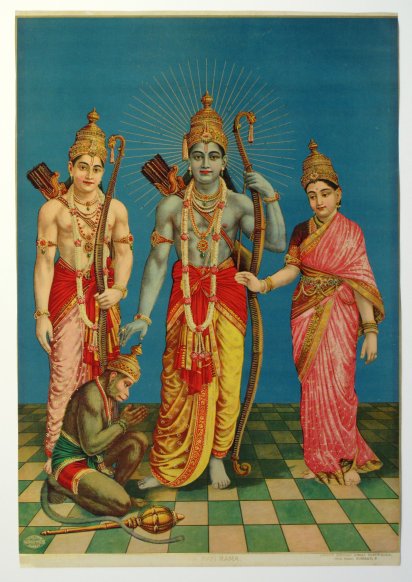prasad1
Active member
RAMANA MAHARSHI’S VIEW OF AVATARS
Ramana Maharshi, one of the great sages of modern India, gained his Self-realization at the age of seventeen after only twenty minutes of inquiry. After this experience, he never departed from the Absolute and demonstrated a life of the highest character and knowledge. The lives of the founders of the world’s main religions contained more struggle and human error than his did, yet Maharshi did not claim to be an avatar and did not place much importance on the term.
When Maharshi was asked who the avatar was, he said that for him everyone is an avatar. He said that from the standpoint of jnana yoga, or the yoga of knowledge, there are no avatars, but only the One Self or One Reality in all the beings of the universe.
According to this line of thought, we should not let the avatar idea obscure the greater truth that all is God and that one who realizes the Self becomes one with everything, including all the avatars, whoever they may be. Self-realization rests upon our own sadhana, which is a matter of daily practice, not on seeking for a magical avatar whom we may never find.
RAMANA MAHARSHI’S VIEW OF AVATARS
Ramana Maharshi, one of the great sages of modern India, gained his Self-realization at the age of seventeen after only twenty minutes of inquiry. After this experience, he never departed from the Absolute and demonstrated a life of the highest character and knowledge. The lives of the founders of the world’s main religions contained more struggle and human error than his did, yet Maharshi did not claim to be an avatar and did not place much importance on the term.
When Maharshi was asked who the avatar was, he said that for him everyone is an avatar. He said that from the standpoint of jnana yoga, or the yoga of knowledge, there are no avatars, but only the One Self or One Reality in all the beings of the universe.
According to this line of thought, we should not let the avatar idea obscure the greater truth that all is God and that one who realizes the Self becomes one with everything, including all the avatars, whoever they may be. Self-realization rests upon our own sadhana, which is a matter of daily practice, not on seeking for a magical avatar whom we may never find.
 yogainternational.com
yogainternational.com
Ramana Maharshi, one of the great sages of modern India, gained his Self-realization at the age of seventeen after only twenty minutes of inquiry. After this experience, he never departed from the Absolute and demonstrated a life of the highest character and knowledge. The lives of the founders of the world’s main religions contained more struggle and human error than his did, yet Maharshi did not claim to be an avatar and did not place much importance on the term.
When Maharshi was asked who the avatar was, he said that for him everyone is an avatar. He said that from the standpoint of jnana yoga, or the yoga of knowledge, there are no avatars, but only the One Self or One Reality in all the beings of the universe.
According to this line of thought, we should not let the avatar idea obscure the greater truth that all is God and that one who realizes the Self becomes one with everything, including all the avatars, whoever they may be. Self-realization rests upon our own sadhana, which is a matter of daily practice, not on seeking for a magical avatar whom we may never find.
RAMANA MAHARSHI’S VIEW OF AVATARS
Ramana Maharshi, one of the great sages of modern India, gained his Self-realization at the age of seventeen after only twenty minutes of inquiry. After this experience, he never departed from the Absolute and demonstrated a life of the highest character and knowledge. The lives of the founders of the world’s main religions contained more struggle and human error than his did, yet Maharshi did not claim to be an avatar and did not place much importance on the term.
When Maharshi was asked who the avatar was, he said that for him everyone is an avatar. He said that from the standpoint of jnana yoga, or the yoga of knowledge, there are no avatars, but only the One Self or One Reality in all the beings of the universe.
According to this line of thought, we should not let the avatar idea obscure the greater truth that all is God and that one who realizes the Self becomes one with everything, including all the avatars, whoever they may be. Self-realization rests upon our own sadhana, which is a matter of daily practice, not on seeking for a magical avatar whom we may never find.
Myth, God, or Man: What Does the Word "Avatar" Actually Mean?
David Frawley unpacks the true meaning and origin of "avatar."

